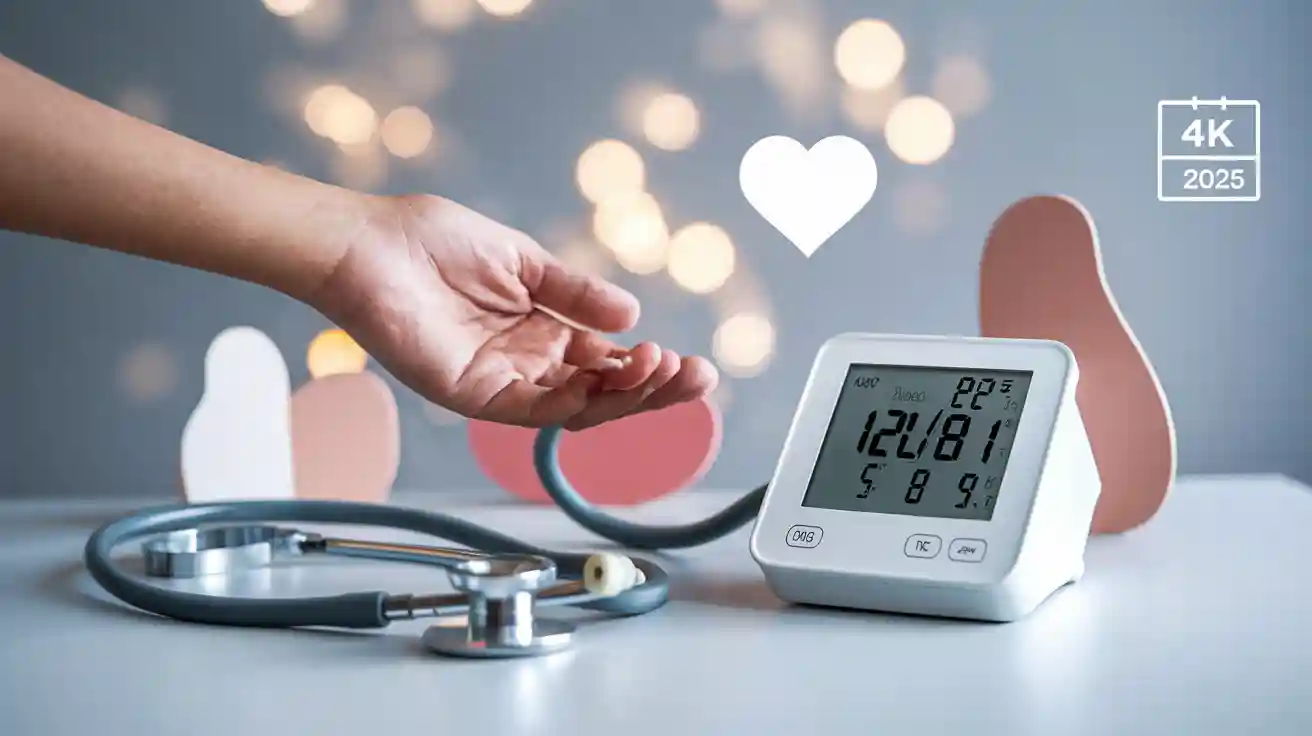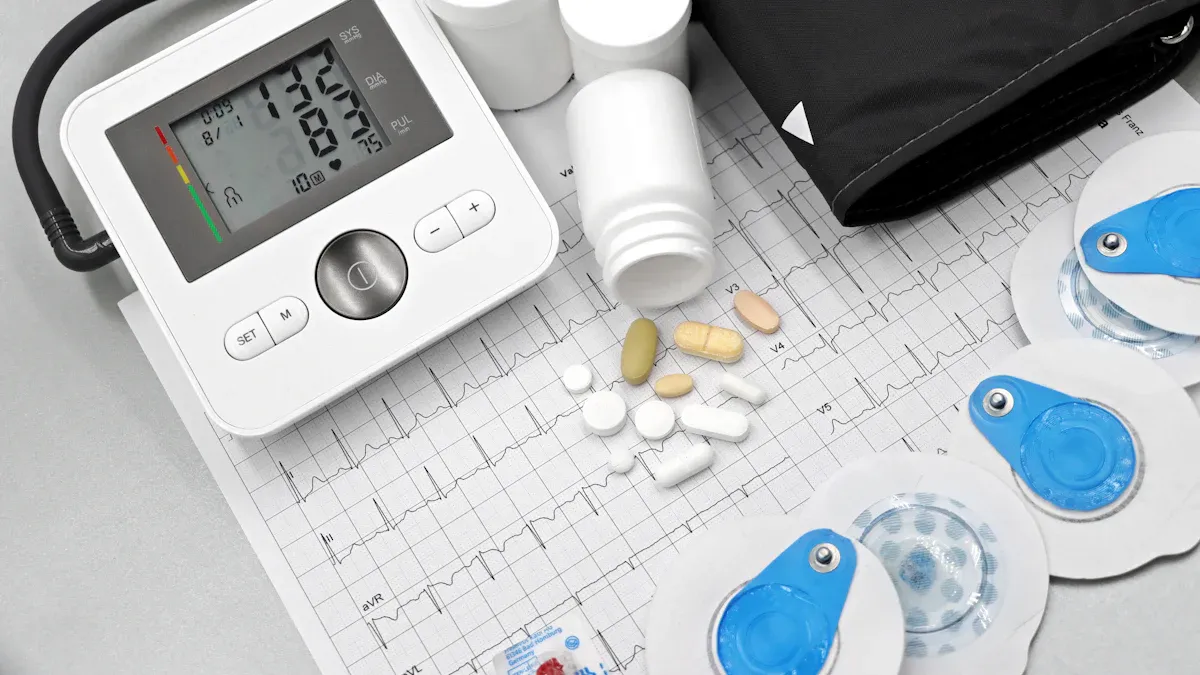Blood Pressure 121/81 Explained for 2025
Table of Contents

If you see a blood pressure 121/81 reading, you might wonder if you should worry. Health experts in the US now say this number does not count as “normal.” Instead, it fits into the “pre-hypertension” group, which means your blood pressure is a little higher than it should be.
- US guidelines now label 120/80 mm Hg as not normal.
- The term “high normal” has changed to “pre-hypertension.”
- Doctors suggest you start healthy habits early.
You do not need to panic. This reading signals a chance to protect your health in the future.
Blood Pressure 121/81: Is It Normal?
Elevated vs. Normal Blood Pressure
You might look at your blood pressure 121/81 and wonder where it fits on the blood pressure chart. Doctors use blood pressure numbers to decide if your reading is normal, elevated, or in a hypertension stage 1 group. The chart below shows how experts in 2025 define these categories:
| Blood Pressure Category | Systolic (mm Hg) | Diastolic (mm Hg) |
|---|---|---|
| Normal | <120 | <80 |
| Elevated | 120-129 | <80 |
| Stage 1 Hypertension | 130-139 | 80-89 |
| Stage 2 Hypertension | ≥140 | ≥90 |
Your blood pressure 121/81 does not fall into the normal blood pressure range. The systolic number (121) puts you in the elevated group, while the diastolic number (81) matches hypertension stage 1. This means your reading sits between elevated and hypertension stage 1. You should know that many adults in the U.S. have similar readings. Nearly half of adults—about 119.9 million people—have high blood pressure. The risk of developing high blood pressure grows as you get older.
Tip: You can check your blood pressure numbers at home or at a doctor’s office. Home readings help you spot changes early.
Health Risks of Elevated Blood Pressure
Elevated blood pressure can put extra strain on your heart and arteries. Over time, this can lead to health problems. The table below shows some short-term and long-term risks:
| Health Risk Type | Description |
|---|---|
| Short-term Risks | Increased strain on the heart and arteries, leading to potential organ damage. |
| Long-term Risks | Higher likelihood of heart failure, heart attack, stroke, kidney failure, and blindness from hypertensive retinopathy. |
You face a higher risk if your blood pressure stays elevated or moves into hypertension stage 1. Studies show that even small increases in blood pressure numbers can double your risk for heart disease and stroke. The link between stroke and high blood pressure is strong. When your blood pressure rises by 20 mm Hg systolic or 10 mm Hg diastolic, your risk for heart problems goes up sharply.
- Elevated systolic blood pressure values are linked to more cases of cardiovascular disease.
- The risk of heart attack and stroke increases as your blood pressure numbers climb.
- Heart failure and kidney problems can develop if you do not manage your blood pressure.
You should pay attention to your health and take steps to keep your blood pressure in a safe range. Making small changes now can protect your heart and lower your risk in the future.
Understanding Blood Pressure Readings

Systolic and Diastolic Numbers
When you look at blood pressure readings, you see two numbers. The first number is the systolic blood pressure. This number shows the pressure in your arteries when your heart beats. The second number is the diastolic blood pressure. This number tells you the pressure in your arteries when your heart rests between beats. Both numbers matter because they give you a full picture of your heart’s health.
Many things can change your blood pressure measurement. For example:
- Anxiety, caffeine, and exercise can make your systolic pressure go up for a short time.
- Diastolic pressure usually stays steady during daily activities. It can even go down when you do cardiovascular exercise.
Doctors measure both numbers at the same time. This helps them see how your heart and blood vessels work together. Over many years, studies have shown that systolic and diastolic numbers often rise and fall together.
Why Readings Matter
You should pay close attention to your blood pressure readings. Regular blood pressure measurement helps you spot changes early. If you ignore a slightly high blood pressure reading, you may face serious health problems later. Some possible risks include:
- Thickening and scarring of your arteries
- Extra work for your heart, which can make it weaker
- Less blood flow to your kidneys, brain, and eyes
- Higher risk of stroke, heart attack, and kidney disease
Note: Home blood pressure measurement can help you control your health better than only checking at the doctor’s office. Studies like the HOMED-BP and HONEST studies found that home readings show your real risk for heart problems more clearly.
| Study | Findings |
|---|---|
| HOMED-BP | Home BP measurements during follow-up linked more closely to heart event risk than baseline. |
| HONEST | High home BP during treatment raised heart event risk; home BP control is more important. |
You can protect your health by checking your blood pressure readings often and making healthy choices every day.
Blood Pressure Categories in 2025

Normal Blood Pressure Range
You want to keep your blood pressure in the healthy range. The 2025 guidelines from the American Heart Association set clear numbers for what counts as normal blood pressure. Doctors now say the ideal blood pressure for adults falls between 90/60 mmHg and 120/80 mmHg. If your numbers stay in this healthy range, you lower your risk for heart disease and stroke.
- Normal blood pressure means your heart and blood vessels work well.
- Staying in the healthy range protects your organs and keeps you feeling your best.
If your blood pressure goes above this range, you move into the elevated or high blood pressure group. You should check your numbers often to make sure you stay in the ideal blood pressure zone.
High Blood Pressure and Elevated Range
Health experts updated the blood pressure categories in 2025 to help you spot risks sooner. The new guideline replaced the 2017 version and uses the latest research. The table below shows how the categories changed over time:
| Guideline Year | Definition of Hypertension | Key Changes |
|---|---|---|
| 2017 ACC/AHA | ≥130/80 mm Hg | New categories for earlier intervention |
| 2024 ESC | ≥140/90 mm Hg | Kept old definition, added elevated BP group |
Doctors made these changes because research found that blood pressure at or above 130/80 mm Hg raises your risk for heart problems. The new categories encourage you to take action sooner and keep your blood pressure in a healthy range.
Here is how the 2025 guideline defines the main categories:
- Normal: Systolic less than 120 mmHg and diastolic less than 80 mmHg
- Elevated: Systolic 120-129 mmHg and diastolic less than 80 mmHg
- High blood pressure (Stage 1): Systolic 130-139 mmHg or diastolic 80-89 mmHg
- High blood pressure (Stage 2): Systolic 140 mmHg or higher or diastolic 90 mmHg or higher
If you have a blood pressure 121/81, your systolic number puts you in the elevated group, but your diastolic number falls into the high blood pressure (Stage 1) group. This means your reading sits between the healthy range and high blood pressure. You should pay attention to both numbers and work to keep them in the healthy range. Regular checks help you stay in control and protect your health.
Note: Even a small rise above the healthy range can increase your risk for heart disease. Try to keep your blood pressure in the ideal blood pressure zone for the best results.
Managing Elevated Blood Pressure
Healthy Habits
You can take control of your heart health by making smart lifestyle changes. These health tips help you lower your risk and keep your blood pressure in a safe range. Many experts recommend the following steps for managing high blood pressure:
- Choose a healthy diet, such as the DASH or Mediterranean diet, which includes fruits, vegetables, whole grains, and lean proteins.
- Exercise regularly. Aim for at least 150 minutes of moderate aerobic activity each week, like brisk walking, cycling, or swimming. Add strength training twice a week.
- Keep a healthy weight. Try to keep your body mass index (BMI) between 18.5 and 25.
- Limit alcohol and caffeine. Too much can raise your blood pressure.
- Quit smoking. Smoking damages your arteries and makes your heart work harder.
- Manage stress. Practice relaxation techniques, such as deep breathing or meditation.
- Get enough sleep every night.
Regular aerobic exercise can lower your systolic blood pressure by 5 to 8 mmHg. This effect is similar to what you might see with blood pressure medication. Combining exercise with medication can lead to even better results.
Reducing sodium in your diet also helps. Research shows that a low-sodium diet can lower systolic blood pressure by about 7 mmHg for most people. You can make a big difference by reading food labels and choosing fresh foods.
When to Seek Medical Advice
You should monitor your blood pressure at home. Home blood pressure testing helps you spot changes early and track your progress. If you notice your readings stay in the elevated or stage 1 hypertension range, schedule a checkup with your doctor. Checking blood pressure regularly helps you and your doctor decide if you need blood pressure medication or more lifestyle changes.
| Blood Pressure Category | Recommended Action |
|---|---|
| Elevated or Stage 1 (low risk) | Lifestyle changes; recheck in 3-6 months |
| Stage 1 (high risk) | Medication + lifestyle changes; recheck in 1 month |
| Stage 2 | See your doctor within 1 month |
| Very High (≥180/110) | Seek care right away |
Call your doctor right away if you have chest pain, shortness of breath, severe headache, vision changes, or weakness. These symptoms may signal a serious heart problem or stroke.
Tip: Monitoring your blood pressure at home gives you the best chance to catch problems early and keep your heart healthy.
A blood pressure reading of 121/81 means you have slightly elevated numbers. You should not ignore this. Both numbers matter for your health.
- Manage stress, as it can raise your blood pressure.
- Check your blood pressure at home for accurate results.
- Make small changes, like eating better and moving more.
Regular checks help you catch problems early and work with your doctor for the best care.
FAQ
What does a blood pressure reading of 121/81 mean?
You have a slightly higher than normal blood pressure. The systolic number (121) is in the elevated range. The diastolic number (81) is in stage 1 hypertension. You should watch your numbers and make healthy choices.
Should you worry about a 121/81 blood pressure reading?
You do not need to panic. This reading signals a small risk. You can lower your risk by eating healthy, exercising, and checking your blood pressure often.
How often should you check your blood pressure at home?
You should check your blood pressure at least once a week. If your numbers change or you start new medicine, check more often. Write down your results to share with your doctor.
Can stress raise your blood pressure?
Yes, stress can cause your blood pressure to go up for a short time. You can lower stress by taking deep breaths, walking, or listening to music.
What foods help lower blood pressure?
You can eat more fruits, vegetables, whole grains, and lean proteins. Try to cut back on salt and processed foods. The DASH diet helps many people lower their blood pressure.

Poseidon
Master of Nutritional Epidemiology, University of Copenhagen, Herbal Functional Nutrition Researcher
Focus: The scientific application of natural active ingredients such as Tongo Ali, Horny Goat Weed, and Maca to sexual health and metabolic regulation.
Core Focus:
Men: Use a combination of Tongo Ali (an energizing factor) + Maca (an energy reserve) to improve low energy and fluctuating libido.
Women: Use a combination of Horny Goat Weed (a gentle regulator) + Maca (a nutritional synergist) to alleviate low libido and hormonal imbalances.
Stressed/Middle-Aged Adults: This triple-ingredient synergy supports metabolism, physical strength, and intimacy.
Product Concept:
Based on traditional applications and modern research (e.g., Tongo Ali promotes testosterone-enhancing enzyme activity, and icariin provides gentle regulation), we preserve core active ingredients and eschew conceptual packaging—using natural ingredients to address specific needs.
Simply put: I'm a nutritionist who understands "herbal actives." I use scientifically proven ingredients like Tongo Ali, Epimedium, and Maca to help you make "sexual health" and "nutritional support" a daily routine.
